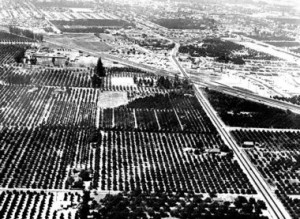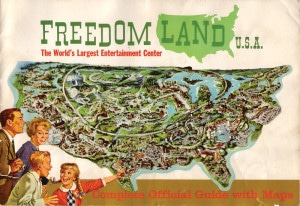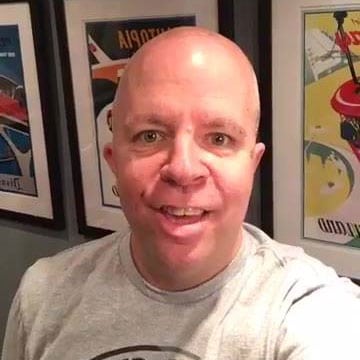As a HUGE Disney fan and somewhat of an amateur Disney historian, I’ve read countless books, magazines, and newspaper articles about the world-famous company over the years. I have seen so many documentaries and behind the scenes videos of the creation of Mickey Mouse, Disneyland, & Walt Disney World that I stopped counting and keeping track years ago. My favorite film about Disneyland, titled “Disneyland USA” is on YouTube and can be found HERE (I’d recommend watching it as soon as you’re finished reading this; it’s fascinating and fantastic for any Disneyland fan!). A few years ago, however, I read an old archived article about a new theme park opening in the Bronx, NY in June of 1960. It was called Freedomland U.S.A. and bore a striking resemblance to the original Disneyland. The park did not last very long, and was shuttered by 1964, but once I dug a little bit deeper into it’s origins I was blown away that I’d never heard it’s creators story before. Let me tell you about The Curious Case of C.V. Wood.

C.V. Wood (center) with Walt Disney
Cornelius Vanderbilt Wood was born on December 17, 1920 in the Lonestar State of Texas. As a younger man (now going by C.V. Wood or his nickname, Woody) he worked as a director of industrial engineering for an aircraft manufacturer in his home state. Later, he was hired by the Stanford Research Institute where he worked as an engineer and as an outside consultant to Walt Disney, helping with the logistics of the anticipated Disney theme park. Walt Disney was so impressed by Wood’s intelligence and problem-solving capabilities that he offered him a job as the supervisor of the construction of Disneyland.

Orange Groves Where Disneyland Was Built
Walt Disney and C.V. Wood were both fiery, passionate individuals and became close very quickly. Walt trusted Wood and named him Disneyland’s very first employee. Wood not only supervised the construction of the park, he actually was the one who chose the site among the orange groves of Anaheim AND was in charge of purchasing the land where the park was built. It was C.V. Wood who, as Vice President and General Manager of Disneyland, gave President Nixon the Key To Disneyland in August of 1955, one month after the grand opening of the park. If you’re anything like me and you’ve never heard of this guy before, this doesn’t make any sense, right? How could a man who was so deeply involved with the construction and creation of Disneyland, a man who Walt Disney often referred to as “a son,” be totally left out of all of the Disney history books and films? Why doesn’t Cornelius Vanderbilt Wood have a window on Main Street U.S.A. in Disneyland, the park that he was so incredibly instrumental in making a reality?

Aerial View of Disneyland in 1955
The answer is a bit of a complicated one. In July of 1956, just six months after the opening of Disneyland, C.V. Wood was gone. Not only was he out as Disneyland’s Vice President and General Manager, he was wiped clean from all of the historical accounts of the Disney company as well. Walt Disney had his older brother, Roy (another key figure in the history of the Disney company, but that story is for another post!) fire Wood reportedly after a heated argument. It’s not known what that argument was about and neither Walt Disney nor his brother Roy ever went public with the true reason why Wood was fired so abruptly. There were rumors that Wood had embezzled money from the Disneys and their company, but there were never any legal proceedings or records that would prove that as a fact. Other speculated reasons for the firing were that Wood was taking too much credit publicly for the creation of Disneyland or that he was fired because he was designing other theme parks behind Walt Disney’s back. Whatever the reason, Wood’s relationship with the Disney Company ended swiftly and without much fanfare. It was like one day, C.V. Wood was in the Disneyland offices, holding meetings like he always did, and the next day he was gone and never spoken of again.
Once he was fired from the Disney Company, C.V. Wood went on to head several other amusement park projects around the country, including Magic Mountain in Colorado in 1958, and Pleasure Island in Boston in 1959. Neither park had much financial success, though, and they were closed within a couple of years. Wood then went on to call himself the “Master Planner of Disneyland” (a title that he probably somewhat deserved) but a lawsuit from the Disney Company squashed his hopes of earning any more money or fame from the Disneyland name.

Freedomland U.S.A. Guidemap
When Freedomland U.S.A. opened in the Bronx in 1964, it seemed like Wood was finally going to achieve the fame and fortune that Walt Disney had achieved with Disneyland’s opening in 1955. The park was made up of several themed lands including Little Old New York, Chicago (which had daily shows depicting the Chicago Fire of 1871), The Great Plains, San Fransisco, The Old Southwest, New Orleans Mardi Gras, and Satellite City: The Future. If any of these ideas sound familiar at all, they should! They were designed an awful lot like Disneyland’s themed lands as Wood was trying to create an east coast version of the popular west coast tourist destination. On the day that Freedomland U.S.A. opened, The Ed Sullivan Show hosted a preview of the new theme park, calling it Disneyland’s equal on the east coast. The following day, traffic was backed up so badly in the Bronx with cars trying to get to the park that Freedomland U.S.A. had to stop selling park tickets.
The initial success of the “East Coast Disneyland” was very short-lived, however, and by the end of it’s first year of operation, Freedomland U.S.A. was already over $8 million in debt. After a few more struggling years, the park was met with the extremely tough competition of the 1964 New York World’s Fair (Walt Disney’s ultimate retribution on his old pal, Woody) and Freedomland U.S.A. filed for bankruptcy and was later torn down. On the site in the Bronx where the park once stood now stands Co-Op City, a large residential development, and the Bay Plaza Shopping Center. A plaque was installed in 2013 commemorating the theme park that once stood on that location.
After his most ambitious theme park was shut down, C.V. Wood did achieve some fame and fortune when he moved the London Bridge from London to Arizona and opened it up as a tourist attraction. He then was hired by Warner Brothers where he worked until his death in 1992. The Disney Company still does not acknowledge any link to Wood to this day, and his existence is still completely wiped out of the “official” history of Disneyland and the Disney Company. It’s doubtful that anyone will ever know the true reason why Wood and Walt Disney had the intense falling out that they had as almost everyone who knew either man isn’t around to tell their stories any longer. Just remember, the next time you’re in Disneyland or Walt Disney World, that yes, Walt Disney was in fact a genius and a visionary. Disneyland was his dream project, his creation, and one of his greatest accomplishments. But also remember, Walt Disney had a little bit of help in realizing his dream, and that help’s name was Cornelius Vanderbilt Wood.
Thank you, as always, for reading and I hope you enjoyed this look back at the story of an all but forgotten visionary who helped Walt Disney design Disneyland. Please feel free to let me know what YOU thought about this story by commenting here on this page, sending me a message or posting on my Facebook wall HERE, tweeting me HERE, or emailing me at phil@eartotheretravel.com Thanks again, and please enjoy the rest of your stay here at Ear To There Travel.
If you’re thinking about taking a Disney vacation soon, whether it’s Walt Disney World, Disneyland, the Disney Cruise Line, Aulani in Hawaii or Adventures By Disney, I can help! I offer concierge level service and will take care of any and all planning for you, and I will do that 100% FREE OF CHARGE!


